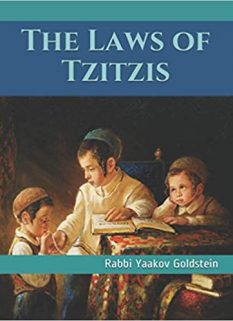*The article below is an excerpt from the above Sefer
*As an Amazon Associate I earn from qualifying purchases.
Chapter 3: The Intellect & Emotions of the G-dly soul
(LY) 27th Kisleiv
1. The ten aspects included in each soul:
- Each one of the three soul levels of the Nefesh, Ruach and Neshama, is made up of 10 aspects or traits.
- The reason each soul contains ten aspects-Hishtalshelus from the ten Sefiros: These 10 traits correspond to the 10 Sefiros from which the soul descended and derived.
2. The Divisions of Mochin and Middos found in the 10 Sefiros:
- Split into two groups: The 10 Sefiros are split into two groups, with the first known as “mothers” and the second known as Kefulos [doubles or pairs].
- The first group-Mochin: The first group of mothers includes within it the intellectual traits of Chochmah, Bina, and Daas.
- The second group-Middos: The second group incorporates the emotional traits which consists of the seven attributes of kindness, severity, etc.
3. The Divisions of intellect and emotion found in the soul:
- Just as we find two divisions within the Sefiros, so too, there are two divisions found within the soul: the intellect and the emotions.
- The intellect-Mochin: The intellect consists of the traits of Chochmah, Bina, and Daas.
- The emotions–Middos: The emotions consist of the feelings of love of G-d, trepidation and fear of Him, etc.
- The term Mothers/Imahos: The reason that the intellect is called by the term “mothers” is because the intellect is the source for the emotions, as emotions come as a result of one’s intellect and understanding.
- The explanation behind both the intellectual and emotional traits and how the latter is a result of the former will be brought below.
4. The intellectual powers of the soul known as Chabad:
- The level of Chochmah-Discovery: The attribute of Chochmah corresponds to the level of intellect that is found in the intellectual soul, known as the Nefesh Hamaskeles. It is this level of intellect that discovers all new intellectual matters and ideas.
- Koch Mah: This level is also known as Koch Mah.
- The level of Bina-Comprehension of discovery: The attribute of Binah corresponds to the contemplation of a certain intellectual idea to the point that it is fully broken down and understood in all its depth. Thus, while it is the attribute of Chochmah which discovers the intellectual concept and idea it is the attribute of Binah which breaks it down and fully understands it.
- The father and mother: These two intellectual attributes of Chochmah and Binah are the father and mother which birth the emotions of love and fear of G-d. [The Alter Rebbe will now explain the exact relationship between the intellect/Chabad and the emotions/Middos, and how the former gives birth to the latter.]
Related Articles
Daily Tanya Monday 18th Tamuz Igeres Hateshuvah Chapter 6: Receiving vitality from the side of evil versus from the side of good
Post Views: 56 1. Receiving vitality from the side of evil versus from the side of good: In times of the temple the Jewish people received their life from the G-dly soul: In the times of the temple when the Shechina resided on it [and was revealed to the whole
Daily Tanya Sunday 17th Tamuz Igeres Hateshuvah Chapter 5 Part 1: Understanding Kares
Post Views: 91 Chapter 5 1. The Origin and Descent of the Divine Soul The human soul is drawn from the innermost level of Divine speech, referenced as the “upper breath” and symbolized by the lower Hei of the Divine Name. The soul’s descent into the physical body is likened
Daily Tanya Thursday 14th Tamuz Igeres Hateshuvah Chapter 4 Part 2: The difference between the soul and angels, speech and breath
Post Views: 214 1. The Divine Origin of the Soul The Jewish soul is described as a “portion of the Divine,” referencing the verse “For the Lord’s portion is His people.” The soul’s origin is compared to the act of God “breathing” life into Adam, signifying an intimate and inner
Daily Tanya Wednesday 13th Tamuz Igeres Hateshuvah Chapter 4 Part 1: Teshuvah Ilah and Tatah
Post Views: 205 Chapter 4 1. Purpose of Repentance and Its Levels Repentance (teshuvah) is essential for spiritual atonement and cleansing of the soul before the Divine. After proper repentance, sacrificial offerings serve as a gift, as described in the Talmud. 2. Understanding True Repentance The main aspect of repentance
Daily Tanya Tuesday 12th Tamuz Igeres Hateshuvah Chapter 3 Part 3: Redeeming Fasts with Charity
Post Views: 235 1. Fasting in our times for rectification of sin: Fasting the full set of fasts for severe sins: One is to fast at least lease one time in his life the number of fasts required for the severe sins that carry a death penalty, such as for
Daily Tanya Monday 11th Tamuz Igeres Hateshuvah Chapter 3 Part 2: Who Should Fast?
Post Views: 251 11th Tamuz 1. Who Should Fast Frequent fasting is appropriate only for those who are healthy and strong, much like in earlier generations. Those whose health may be harmed by numerous fasts should avoid them, even for severe sins. 2. Limitations on Fasting Even in past generations,


 Donate
Donate
Leave A Comment?
You must be logged in to post a comment.